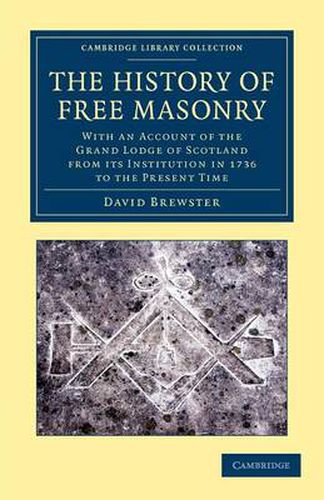Readings Newsletter
Become a Readings Member to make your shopping experience even easier.
Sign in or sign up for free!
You’re not far away from qualifying for FREE standard shipping within Australia
You’ve qualified for FREE standard shipping within Australia
The cart is loading…






The Scottish natural philosopher and historian of science Sir David Brewster (1781-1868), best remembered as a friend of Sir Walter Scott and the inventor of the kaleidoscope, contributed reviews and articles on a huge variety of subjects to such periodicals as the Edinburgh Review and Fraser’s Magazine. (His Letters on Natural Magic Addressed to Sir Walter Scott and his two-volume life of Isaac Newton are also reissued in this series). In this work, published in 1804, Brewster is determined to refute the allegations often directed against the Freemasons, as representing ‘caverns of darkness, in which the most detestable schemes have been hatched’. He does so by tracing the history of the ‘peaceful institution’ of Freemasonry from antiquity until the end of the eighteenth century. He then describes the history of the Grand Lodge of Scotland from its institution in 1736, basing his account on the records of the Lodge.
$9.00 standard shipping within Australia
FREE standard shipping within Australia for orders over $100.00
Express & International shipping calculated at checkout
The Scottish natural philosopher and historian of science Sir David Brewster (1781-1868), best remembered as a friend of Sir Walter Scott and the inventor of the kaleidoscope, contributed reviews and articles on a huge variety of subjects to such periodicals as the Edinburgh Review and Fraser’s Magazine. (His Letters on Natural Magic Addressed to Sir Walter Scott and his two-volume life of Isaac Newton are also reissued in this series). In this work, published in 1804, Brewster is determined to refute the allegations often directed against the Freemasons, as representing ‘caverns of darkness, in which the most detestable schemes have been hatched’. He does so by tracing the history of the ‘peaceful institution’ of Freemasonry from antiquity until the end of the eighteenth century. He then describes the history of the Grand Lodge of Scotland from its institution in 1736, basing his account on the records of the Lodge.